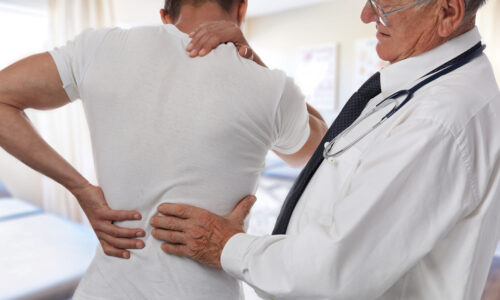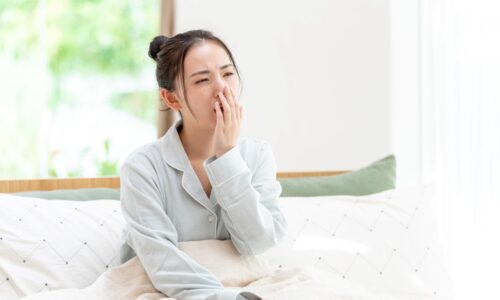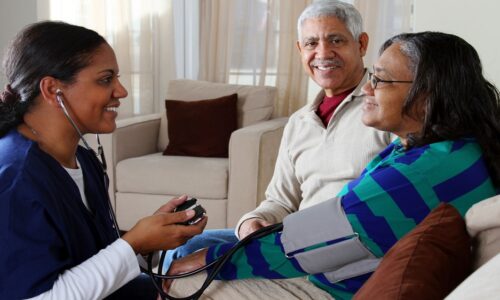Migraines are mainly of two types: Episodic Migraine and Chronic Migraine. A person is suffering from episodic migraines if he/she experiences less than 15 headaches per month. However, if the frequency of headache is more than 15 in a month, it is then a clear sign of a chronic migraine. According to the world’s leading membership organization, the International Headache Society, chronic migraine is defined as the occurrence of fifteen headaches per month, over a period of three months, of which eight should be migrainous.

Chronic migraine negatively impacts the efficiency and productivity of people. Some of the side-effects include absenteeism from school, laziness in household activities, and disinterest in social activities. Hence, it is crucial to treat this disease as soon as possible. The following are the few chronic migraine treatment techniques discussed to get rid of chronic migraine.
Topics Covered
Biofeedback
Biofeedback is an electronic monitoring migraine treatment technique that aims to teach a patient about how to control involuntary biological mechanisms, such as heart rate and muscle tension. This technique is recognized by the National Headache Foundation and American Headache Society as an effective method of treating chronic migraine.
The effectiveness of this technique can be measured by the fact that 7 out of 10 people, who tried Biofeedback, experienced a reduction of 70% in migraine. Some of the doctors consider it more effective than other therapy techniques used for treating migraines.
Acupuncture
Acupuncture is a prevalent method of chronic migraine treatment. In this technique, a very fine needle is inserted into specific points of the body, with high precision, by particularly trained people. The needles are then manually or electrically stimulated. It treats migraines by increasing the blood flow around the area of the needle.
Despite the evidence of a reduction in the frequency of headaches after acupuncture, doctors have mixed opinions regarding its use as a means of treating migraines. Like Biofeedback, Acupuncture is also highly recommended by the American Headache Society. In some cases, acupuncture can have certain side effects like bruising, soreness, bleeding, numbness, and tingling.
Tinted lenses
Tinted lenses are for those people whose migraines get triggered due to light. These lenses provide relief naturally and also prevent migraine attacks from happening in the future. Blue-green lights trigger the pain response in people suffering from migraines. Tinted lenses restrict these lights and reduce the effects of attacks.
Tinted lenses are rose-coloured and can be worn around fluorescent lights, computers, mobile devices, sunlight, or any other common light source. Research showed that children who wore tinted lenses experienced a 75% reduction in attacks. The cost of these lenses ranges from $99 to $300.
Stress management
One of the primary reasons for migraines is stress. Hence, relaxation, meditation, and stress management techniques are some of the very useful alternative migraine treatments. It is especially helpful for those with a history of medication overuse. This approach involves learning relaxation methods, guided meditations, and controlled breathing practices.
The reason behind the success of these methods as a migraine reduction technique is to focus on positive behaviour. Migraine becomes worse when people focus more on pain associated with it, rather than on its treatment. Study shows that there was a 33% reduction in pain for some patients, after a single session of meditation.
Neurostimulation
Also known as Neuromodulation, Neurostimulation is a surgical procedure of curing migraines. It consists of two therapies. One is done using a device called Cefaly to stimulate the transcutaneous supraorbital nerve. It inhibits the initiation of migraine attacks with the help of electrodes. The other one uses magnets for stimulation of cranial nerves and is known as transcranial magnetic stimulation through the Spring TMS.
The transcutaneous supraorbital nerve stimulation technique is approved by the Food & Drug Administration (FDA). A reduction of 50% of the migraine attack, for a month, has been observed after using this technique. However, this technique has certain side-effects, such as localized pain or inflammation, fatigue, insomnia, and headache.
Use of supplements
Magnesium and riboflavin (also known as vitamin B2) are some of the supplements that can be used for the treatment of migraines. These supplements are available as pills and offer natural remedies to headaches. Some of the difficulties of using these supplements are diarrhoea, vomiting, and intestinal irritation.
Preventive Measures
Migraines can be triggered by certain medications or habits and it is vital to be aware and avoid them in your routine.
Loud noises and bright lights
One of the most common triggers of a migraine is loud noises and bright lights. Sensory stimulation is a trigger for migraine headaches and one of the ways to evade these triggers is to keep away from certain situations and places. It is always recommended to avoid crowded venues like clubs, concerts etc. Apart from this, you need to also make sure that you give enough rest for your eyes by taking breaks in between watching TV or using the computer screen and, also adjust the brightness levels of the screen to avoid strain.
Relaxing Exercises
As mentioned earlier, meditation can be a great stress-reduction activity to go for. It is best not to opt for intense exercises but stick to ones which need less strain. Yoga or aerobics is a great option that people who have severe migraine can adapt.
It may be difficult to avoid daily stress but you can keep it in control by incorporating specific habits to your routine.
- Time management: Divide your day and your daily chores in a manageable manner. You need to make sure not to overcommit on anything and complete your work in moderation. It is normal and fine to leave out some work if too much and continue the next day at peace.
- Quality time with self: Spend at least 20-25 minutes in a day doing something you love by yourself. This can be a stroll in the park, reading a book or even cooking something exquisite. Anything that relaxes your mind can be adopted.
- Breaks are vital: If you feel overwhelmed at work, take some time out. Slow stretches or a walk can be few of the ways to regain your energy before you get back to work.
Complete your sleep cycle
It is observed that lack of sleep is one of the triggers for migraine in people. Sleep deprivation and over-sleeping, both can aggravate the symptoms of a migraine. Go to bed early and complete 7-8 hours of sleep without fail. Sleeping too late or watching something for hours late in the night can also have an impact on your condition. You can consider these points for better sleep and less frequent migraine attacks.
- Try to avoid naps of longer than 30 minutes during the day. Naps can interfere with your sleep hours in the night and are not recommended for a healthier lifestyle.
- Before going to bed, indulge in activities that can relax you. This can be different for each person; reading a book before bed, listening to music or maybe having a hot shower before bed. A relaxed mind promotes better sleep.
- Avoid caffeine or other such stimulants that can interfere with your sleep during late-evenings or night time.
- Experts recommend keeping work and other related items away from your bedroom. These function as distractions and can delay your bedtime. Taking work to the bed can also induce stress which can disrupt a person’s sleep cycle.
Food is important
Certain items in your diet can also be the reason for frequent migraine headaches. These include;
- Chocolate
- Alcohol
- Cheese
- Processed foods
You need not give up any of these items completely until recommended by your doctor but you need to consume these items in moderation. Excessive and frequent consumption is the reason why these items trigger symptoms of a migraine.
Skipping your meal and dehydration can also be the culprits for causing a migraine. It is important to eat within an hour of waking up and eat healthy options in every 4-5 hours. Make it a routine to have enough water throughout the day. In case, you’re stepping out in the hot sun, carry water with you.
Hormonal Changes in Women
Most women experience migraine headaches before or during their menstrual period. During the menstrual period, they should pay more attention to their diet and also the medications they take. For some women, regular migraine medication may not work during the menstrual period. Menstrual migraine can bring excruciating pain and nausea along with other symptoms. Some of the ways to keep menstrual migraine in control are
- Moderate exercise on a daily basis. Do not strain yourself by adopting intense routines but stick to simpler options.
- Especially during the menstrual cycle avoid dehydration, skipping meals, and lack of sleep. Try and keep stress in control to avoid intense migraine headaches.
Conclusion
There are various other alternative migraine treatments that can be as effective as those mentioned above. This being said, finding an all approved migraine treatment is difficult, mainly because migraines are person-specific. What works for one person may not be as effective for others. People suffering from this chronic disorder are advised to consult the doctor.
Author Bio:
Piza Gogoi is a digital marketing aficionado who’s perpetually active on Twitter and LinkedIn. She loves writing blogs on various niches like lifestyle, travel, health blogs, & many more. Always on the lookout for the latest and greatest online as well as offline, Piza devotes a major part of her day articulating her thoughts and experiences through words.




